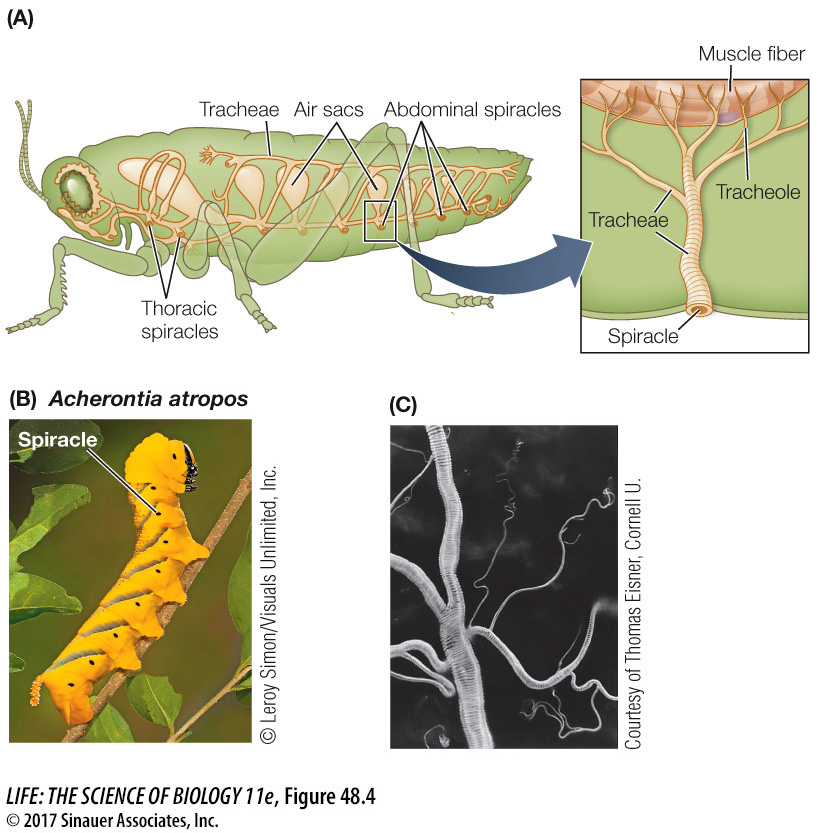Printed Page 1026(cont.)
Insects have airways throughout their bodies
The tracheal system that enables insects to exchange respiratory gases extends to all tissues in the insect body. Thus respiratory gases diffuse through air most of the way to and from every cell. The insect respiratory system communicates with the outside environment through gated openings called spiracles in the sides of the abdomen and thorax (Figure 48.4A and B). The spiracles open to allow gas exchange and then close to decrease water loss. They open into tubes called tracheae that branch into even finer tubes, or tracheoles, that end in tiny air capillaries—

Figure 48.4 The Tracheal Gas Exchange System of Insects (A) In insects, respiratory gases diffuse through a system of air sacs and tubes (tracheae) that open to the external environment through holes called spiracles. (B) The spiracles of a hawkmoth larva run down its sides. (C) A scanning electron micrograph shows an insect trachea dividing into smaller tracheoles and still finer air capillaries.